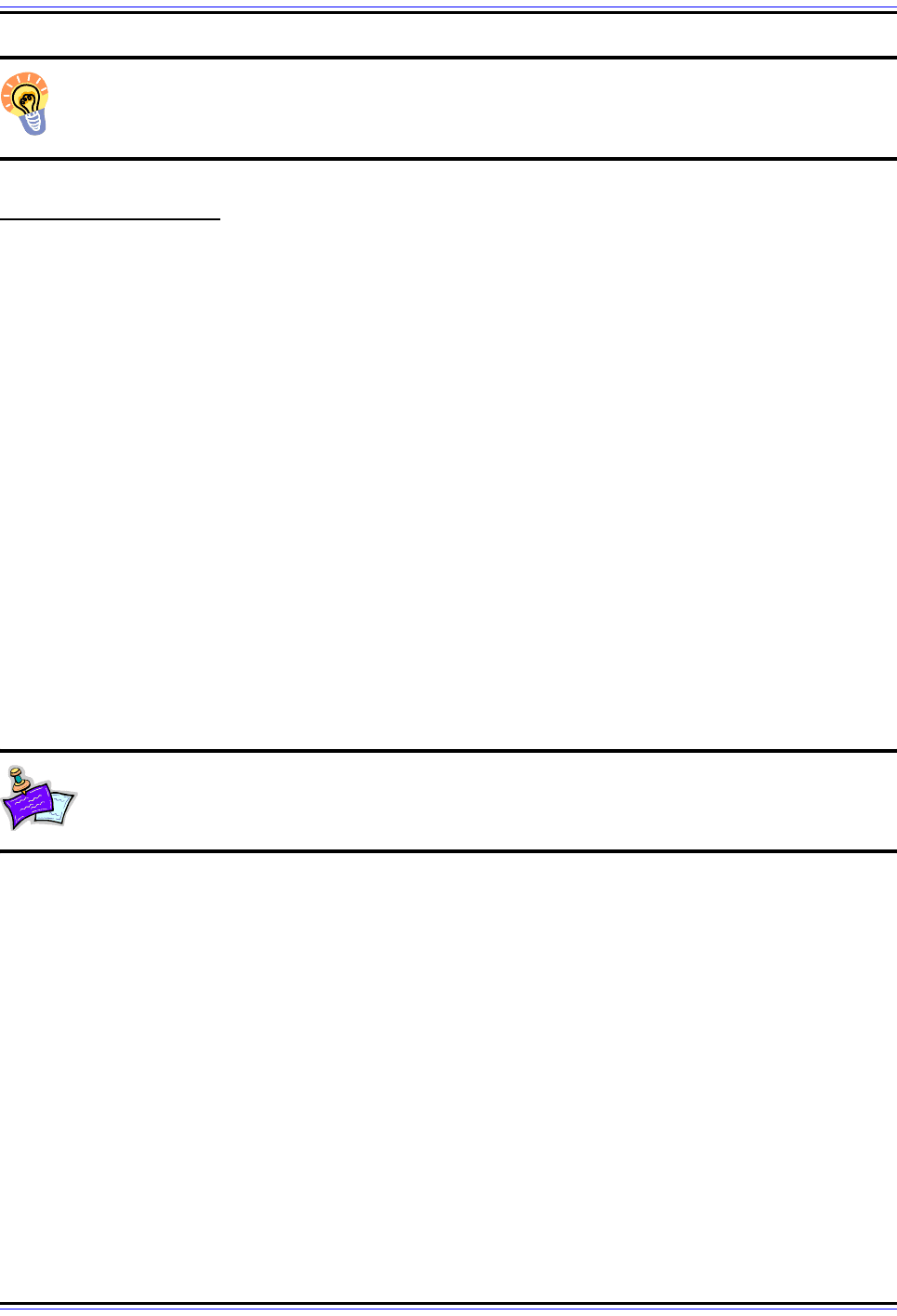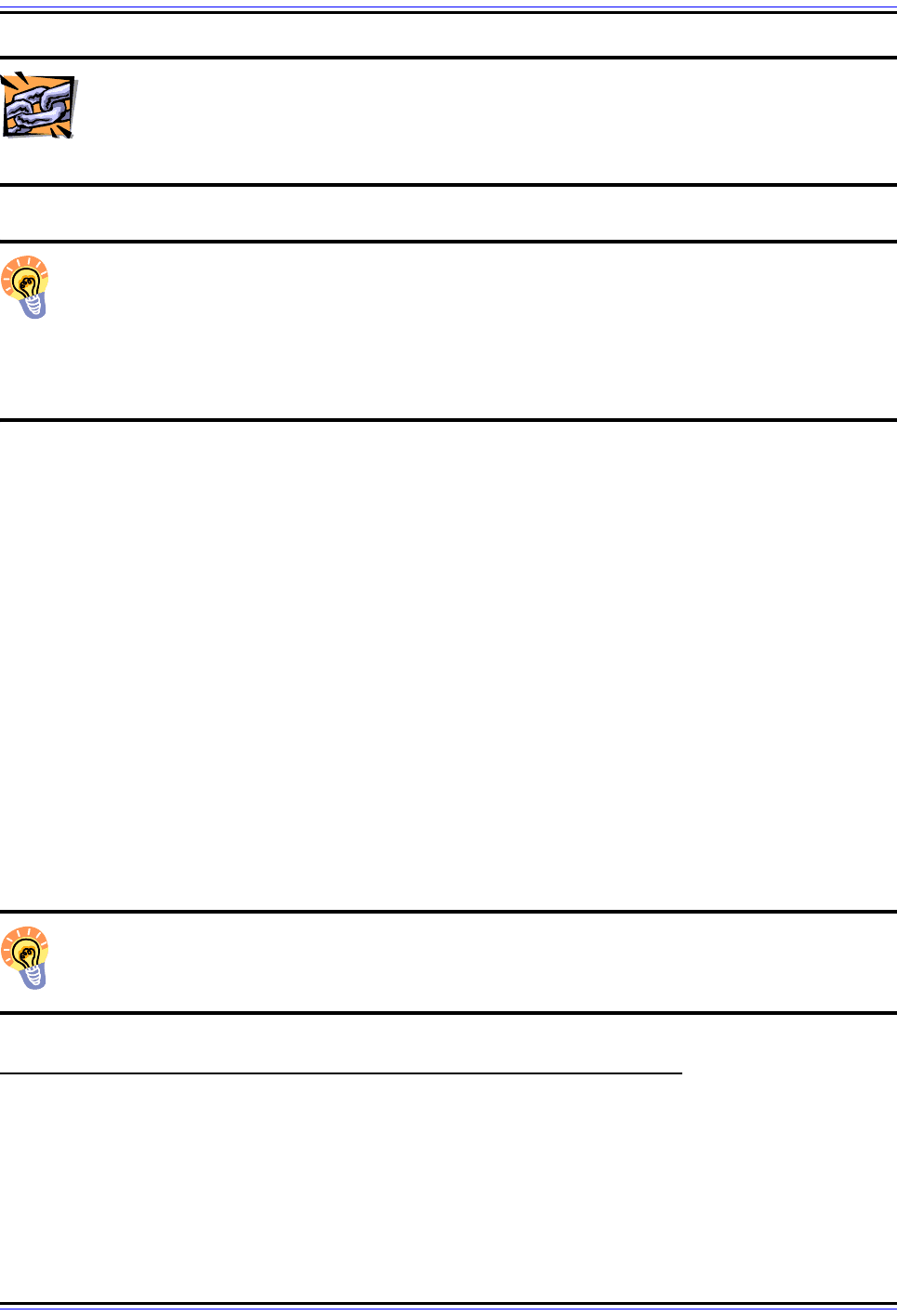Charles M. Kozierok The TCP-IP Guide
Подождите немного. Документ загружается.


The TCP/IP Guide - Version 3.0 (Contents) ` 1571 _ © 2001-2005 Charles M. Kozierok. All Rights Reserved.
Host
Specifies the Internet host as a DNS domain name, and may also contain a port number
specification as well (typically, only if a port other than the HTTP default of 80 is to be used).
This header is used to allow multiple domains to be served by the same Web server on a
particular IP host. It has the distinction of being the only mandatory header—it must be
present in all HTTP/1.1 requests.
If-Match
Makes a method conditional by specifying the entity tag (or tags) corresponding to the
specific entity that the client wishes to access. This is usually used in a GET method, and
the server responds with the entity only if it matches the one specified in this header.
Otherwise, a 412 (“Precondition Failed”) reply is sent.
If-Modified-Since
Makes a method conditional by telling the server to return the requested entity only if it has
been modified since the time specified in this header. Otherwise, the server sends a 304
(“Not Modified”) response. This is used to check if a resource has changed since it was last
accessed, to avoid unnecessary transfers.
If-None-Match
This is the opposite of If-Match; it creates a conditional request that is only filled if the
specified tag(s) do not match the requested entity.
If-Range
This header is used in combination with the Range header to effectively allow a client to
both check for whether an entity has changed and request that a portion of it be sent in a
single request. (The alternative is to first issue a conditional request, which if it fails would
then require a second request.) When present, If-Range tells the server to send to the client
the part of the entity indicated in the Range header if the entity has not changed. If the entity
has changed, the entire entity is sent in response.
If-Unmodified-Since
The logical opposite of the If-Modified-Since header; the request is filled only if the resource
has not been modified since the specified time; otherwise a 412 reply is sent.
Max-Forwards
Specifies a limit on the number of times a request can be forwarded to the next device in the
request chain. This header is used with the TRACE or OPTIONS
methods only, to permit
diagnosis of forwarding failures or looping. When present in one of these methods, each
time a device forwards the request, the number in this header is decremented. If a device

The TCP/IP Guide - Version 3.0 (Contents) ` 1572 _ © 2001-2005 Charles M. Kozierok. All Rights Reserved.
receives a request with a Max-Forwards value of 0, it must not forward it but rather respond
back to the client. (In a way, this is somewhat analogous to how the Time To Live field is
used in the Internet Protocol datagram format.)
Proxy-Authorization
This is like the Authorization header, but is used to present credentials to a proxy server for
authentication, rather than the end server. It is created using information sent by a proxy in
a response containing a Proxy-Authenticate header. This is a hop-by-hop header, sent only
to the first proxy that receives the request. If authentication is required with more than one
proxy, multiple Proxy-Authorization headers may be put in a message, with each proxy in
turn “consuming” one of the headers.
Range
Allows the client to request that the server send it only a portion of an entity, by specifying a
range of bytes in the entity to be retrieved. If the requested range is valid, the server sends
only the indicated part of the file, using a 206 (“Partial Content”) status code; if the range
requested cannot be filled, the reply is 416 (“Requested Range Not Satisfiable”).
Referer [sic]
Tells the server the URL of the resource from which the URL of the current request was
obtained. Typically, when a user clicks a link on one Web page to load another, the address
of the original Web page is put into the Referer line when the request for the clicked link is
sent. This allows tracking and logging of how the server is accessed. If a human user
manually enters a URI into a Web browser, this header is not included in the request. Since
this header provides information related to how Web pages are used, it has certain privacy
implications.
The proper spelling of this word is “referrer”. It was misspelled years ago in an earlier
version of the HTTP standard, and before this was noticed and corrected, became incorpo-
rated into so much software that the IETF chose not to correct the spelling in HTTP/1.1.
TE
Provides information to the server about how the client wishes to deal with transfer
encodings for entities sent by the server. If extensions to the standard HTTP transfer
encodings are defined, the client can indicate its willingness to accept them in this header.
The header “TE: trailers” can also be used by the client to indicate its ability to handle
having headers sent as trailers following data when “chunking” of data is done. This is a
hop-by-hop header and applies only to the immediate connection.

The TCP/IP Guide - Version 3.0 (Contents) ` 1573 _ © 2001-2005 Charles M. Kozierok. All Rights Reserved.
User-Agent
Provides information about the client software. This is normally the name and version
number of the Web browser or other program sending the request. It is used for server
access statistic logging and also may be used to tailor how the server responds to the
needs of different clients. Note that proxies do not modify this field when forwarding a
request; rather, they use the Via header.
Key Concept: HTTP request headers are used only in HTTP Request messages.
They allow a client to provide information about itself to a server, and provide more
details about a request and control over how it is carried out.
HTTP Response Headers
The counterpart to request headers, response headers appear only in HTTP responses
sent by servers or intermediaries. They provide additional data that expands upon the
summary information that is present in the status line at the beginning of each server reply.
Many of the response headers are sent only in response to the receipt of specific types of
requests, or even particular headers within certain requests.
There are nine response headers defined for HTTP/1.1.
Accept-Ranges
Tells the client whether or not the server accepts partial content requests using the Range
request header, and if so, what type. Typical examples include “Accept-Range: bytes” if the
server accepts byte ranges, or “Accept-Range: none” if range requests are not supported.
Note that this is header is different from the other “Accept-” headers, which are used in
HTTP requests to perform content negotiation.
Age
Tells the client the approximate age of the resource, as calculated by the device sending the
response.
ETag
Specifies the entity tag for the entity included in the response. This value can be used by
the client in future requests to uniquely identify an entity, using the If-Match request header
or similar.

The TCP/IP Guide - Version 3.0 (Contents) ` 1574 _ © 2001-2005 Charles M. Kozierok. All Rights Reserved.
Location
Indicates a new URL that the server is instructing the client to use in place of the one the
client initially requested. This header is normally used when the server redirects a client
request to a new location, using a 301, 302 or 307 reply. It is also used to indicate the
location of a created resource in a 201 (“Created”) response to a PUT request.
Note that this is not the same as the Content-Location entity header, which is used to
indicate the location of the originally-requested resource.
Proxy-Authenticate
This is the proxy version of the WWW-Authenticate header (see below). It is included in a
407 (“Proxy Authentication Required”) response, to indicate how the proxy is requiring the
client to perform authentication. The header specifies an authentication method as well as
any other parameters needed for authentication. The client will use this to generate a new
request containing a Proxy-Authorization header. This is a hop-by-hop header.
Retry-After
This header is sometimes included in unsuccessful requests—such as those resulting in a
503 (“Service Unavailable”) response—to tell the client when it should try its request again.
It may also be used with a redirection response such as 301, 302 or 307, to indicate how
long the client should wait before sending a request for the redirected URL. The Retry-After
header may specify either a time interval to wait (in seconds) or a full date/time when the
server suggests the client try again.
Server
This is the server's version of the User-Agent request header; it identifies the type and
version of the server software generating the response. Note that proxies do not modify this
field when forwarding a response; they put their identification information into a Via header
instead.
Vary
Specifies which request header fields fully determine whether a cache is allowed to use this
response to reply to subsequent requests for the same resource without revalidation. A
caching device inspects the Vary header to determine which other headers it needs to
examine to determine whether or not it can respond with a cached entry, when the client
makes its next request for the resource in this reply. Yeah, this one's a bit confusing.
WWW-Authenticate
This header is included in a 401 (“Unauthorized”) response, to indicate how the server
wants the client to authenticate. The header specifies an authentication method as well as
any other parameters needed for authentication. The client will use this to generate a new
request containing an Authorization header.

The TCP/IP Guide - Version 3.0 (Contents) ` 1575 _ © 2001-2005 Charles M. Kozierok. All Rights Reserved.
Key Concept: HTTP response headers appear in HTTP Response messages,
where they provide additional information about HTTP server capabilities and
requirements, and the results of processing a client request.
HTTP Entity Headers
Last but not least, we come to the fourth group of HTTP headers: entity headers. These
headers provide information about the resource carried in the body of an HTTP message,
called an entity in the HTTP standards. They serve the overall purpose of conveying to the
recipient of a message the information it needs to properly process and display the entity,
such as its type and encoding method.
The most common type of entity is a file or other set of information that has been requested
by a client, and for this reason, entity headers most often appear in HTTP responses.
However, they can also appear in HTTP requests, especially those using the PUT and
POST methods, which are the ones that transfer data from a client to a server.
At least one entity header should appear in any HTTP message that carries an entity.
However, they may also be present in certain responses that do not have an actual entity in
them. Most notably, a response to a HEAD request will contain all the entity headers
associated with the resource specified in the request; these are the same headers that
would have been included with the entity, had the GET method been used instead of HEAD
on the same resource. Entity headers may also be present in certain error responses, to
provide information to help the client make a successful follow-up request.
Note: Many of the entity headers have the same names as certain MIME headers,
but they are often used in different ways. See the topic on HTTP Internet media
types for a full discussion of the relationship between HTTP and MIME.
The following are the entity headers defined in HTTP/1.1:
Allow
Lists all the methods that are supported for a particular resource. This header may be
provided in a server response as a guide to the client regarding what methods it may use on
the resource in the future. The header must be included when a server returns a 405
(“Method Not Allowed”) response to a request containing an unsupported method.
Content-Encoding
Describes any optional method that may have been used to encode the entity. This header
is most often used when transferring entities that have been compressed; it tells the
recipient what algorithm has been used so the entity can be uncompressed. Note that this

The TCP/IP Guide - Version 3.0 (Contents) ` 1576 _ © 2001-2005 Charles M. Kozierok. All Rights Reserved.
header only describes transformations performed on the entity in a message; the Transfer-
Encoding header describes encodings done on the message as a whole. See the topic on
content codings and transfer codings for more details.
Content-Language
Specifies the natural (human) language intended for using the entity. This is an optional
header, and may not be appropriate for all resource types. Multiple languages may be
specified, if needed.
This header is intended to provide guidance so the entity can be presented to the correct
audience; thus, the language should be selected based on who would best use the
material, which may not necessarily include all of the languages used in the entity. For
example, a German analysis of Italian operas would probably best tagged only with the
language “de”. (They do have German analyses of Italian operas, don’t they? ☺)
Content-Length
Indicates the size of the entity in octets. This header is important, as it is used by the
recipient to determine the end of a message. However, it may only be included in cases
where the length of a message can be fully determined prior to transmitting the entity. This
is not always possible in the case of dynamically-generated content, which complicates
message length calculation; the discussion of data length and the “chunked” transfer
encoding contains a full exploration of this issue.
Content-Location
Specifies the resource location of the entity, in the form of an absolute or relative uniform
resource locator (URL). This is an optional header, and is normally included only in cases
where the entity has been supplied from a location different from the one specified in the
request. This may occur if a particular resource is stored in multiple places.
Content-MD5
Contains an MD5 digest for the entity, used for message integrity checking.
Content-Range
Sent when a message contains an entity that is only part of a complete resource; for
example, a fragment of a file sent in response to an HTTP GET request containing the
Range header. The Content-Range header Indicates what portion of the overall file this
message contains, as well as the total size of the resource. This information is given as a
byte range, with the first byte numbered 0; for example, if the entity contains the first 1,200
bytes of a 2,000-byte file, this header would have a value of “0-1199/2000”.

The TCP/IP Guide - Version 3.0 (Contents) ` 1577 _ © 2001-2005 Charles M. Kozierok. All Rights Reserved.
Content-Type
Specifies the media type and subtype of the entity, in a manner very similar to how this
header is used in MIME. See the topic describing HTTP entities and Internet media types
for a full discussion.
Expires
Specifies a date and time after which the entity in the message should be considered
“stale”. This may be used to identify certain entities that should be held in HTTP caches for
longer or shorter periods of time than usual.
This header is ignored if a Cache-Control header containing the “max-age” directive is
present in the message.
Last-Modified
Indicates the date and time when the server believes the entity was last changed. This
header is often used to determine if a resource has been modified since it was last
retrieved. For example, suppose a client machine already contains a copy of a very large
file that was obtained two months ago, and its user wants to check if an update to the file is
available. The client can send a HEAD request for the file, and compare the value of the
returned Last-Modified header to the date of the copy of the file it already has. Then it
needs only to request the entire file if it has changed.
Note the use of the word “believe” in the description above. The reason for this wording is
that the server cannot always be certain of the time that a resource was modified. With files
this is fairly simple—it is usually the last-modified time stored for the file by the operating
system. For other more complex resources such as database records or virtual objects,
however, it may be more difficult to ascertain when the last change occurred to a particular
piece of information. In the case of dynamically-generated content, the Last-Modified date/
time may be the same as that of the message as a whole, as specified in the Date field.
Key Concept: HTTP entity headers appear in either request or response messages
that carry an entity in the message body. They describe the nature of the entity,
including its type, language and encoding, to facilitate the proper processing and
presentation of the entity by the device receiving it.

The TCP/IP Guide - Version 3.0 (Contents) ` 1578 _ © 2001-2005 Charles M. Kozierok. All Rights Reserved.
HTTP Entities, Transfers, Coding Methods and Content Management
HTTP message headers are very important, because they are the mechanism that HTTP
uses to allow devices to specify the details of client requests and server responses. These
headers, however, are only the means to an end, which is the transfer of resources such as
files, form input and program output from one device to another. When a resource is carried
in the body of an HTTP message, it is called an entity. HTTP defines special rules for how
these entities are identified, encoded and transferred.
In this section, I take a detailed look at how HTTP handles entities. I begin with a discussion
of entities in general terms, and a look at how their contents are identified; this includes an
examination of the relationship between HTTP and MIME. I discuss the issues behind the
transfer of entities between clients and servers, and the difference between content
encodings and transfer encodings. I describe the special issues associated with identifying
the length of entities in HTTP messages, and detail the special “chunked” transfer coding
and message trailers. Finally, I describe the methods by which devices can perform content
negotiation, and how quality values allow clients to intelligently select different variations of
a resource.
HTTP Entities and Internet Media Types
The presence of the word “text” in the name “Hypertext Transfer Protocol” is a reminder of
the legacy of HTTP. As I explained in my brief history of the World Wide Web, it was origi-
nally created to allow text documents to be linked together. This made sense, because at
the time that the Web was being created, most computing was still being done with text.
Accordingly, the first version of HTTP (HTTP/0.9) supported only one type of message
body: a plain ASCII text document.
In the early 1990s, the rapid increase in computing power and networking performance
transformed the world of information technology from text to multimedia. These were also
the World Wide Web’s formative years, and it did not take long before many users wanted
to exploit the power of the Web to share not only text files but also pictures, drawings,
sound clips, movies and much more. Thus, HTTP had to evolve as well; starting with HTTP/
1.0, significant changes were made to allow the protocol to transport and process much
more than just text. Today, HTTP really would be better described as dealing with hyper-
media than hypertext, though the name of the protocol was never changed.
One drawback of supporting many types of files in HTTP is added complexity. Where before
every message recipient knew the body contained ASCII text, now any message can
contain any of many kinds of data. When HTTP was expanded to support flexible media, it
needed a system that would address two specific issues: encoding entities of various types
into an HTTP message body, and clearly identifying the entity’s characteristics for the
recipient of the message.
At the same time that HTTP was being changed to support non-text entities, another
important TCP/IP application was also moving away from its decades-long role as a text-
messaging medium, to one that could transport multimedia: electronic mail. This was
accomplished using a technology called Multimedia Internet Mail Extensions (MIME), which

The TCP/IP Guide - Version 3.0 (Contents) ` 1579 _ © 2001-2005 Charles M. Kozierok. All Rights Reserved.
define a mechanism for encoding and identifying non-text data—exactly what HTTP
needed to do. Since TCP/IP developers wisely reuse technologies that work, the creators of
HTTP borrowed many concepts from MIME, including many of the MIME e-mail headers
that are used to identify the contents of a MIME message.
Media Types and Subtypes
The most important concept that HTTP adopted from MIME was the use of standardized
Internet media types, which describe the contents of an HTTP entity. Each media type
consists of a top-level media type that defines its general nature, and a more specific
subtype that indicates its form or structure. Additional parameters may also be supplied in
some cases to provide more information to help a recipient interpret the entity. The formal
syntax of an HTTP media type is the same as that used in MIME:
<type>/<subtype> [; parameter1 ; parameter2 … ; parameterN ]
To understand the difference between a top-level media type and a subtype we need only
take a couple of examples. Text documents use the general type “text”; within this, subtypes
exist such as “plain” for regular unformatted text and “html” for HTML documents. So, an
HTML document of the type commonly transported using HTTP will be identified with a
media type of “text/html”. Similarly, “image” is a top-level media type, and has subtypes
such as “jpeg”, “gif” and “tiff”. Photographs usually use “image/jpeg”, while line drawings are
often seen as “image/gif”.
HTTP's Use of Media Types
In HTTP, media types are most often seen in a special Content-Type entity header, which is
present in any HTTP message that carries an entity. This header uses the same format as
the header of the same name in MIME:
Content-Type: <type>/<subtype> [; parameter1 ; parameter2 … ; parameterN ]
The other place where media types are used in HTTP is in the Accept request header,
which may appear in an HTTP request sent by a client. If present, the purpose of this
header is to tell the server what sorts of media types the client can handle, so the server will
not send a response that cannot be processed. For example, if a client can only process
text documents, it might send a request specifying this in an Accept header. This is part of
the overall content negotiation process supported by HTTP.
When a media type is specified in an Accept header, either the subtype, or both the type
and subtype, can be replaced by the “*” wildcard to represent “any acceptable”. For
example, in an Accept header, the specification “text/html” refers to an HTML document,
while “text/*” means “any text type”. The string “*/*” means any type of media; this is usually
used in combination with a “q” value as explained in the topic on the HTTP content negoti-
ation process.

The TCP/IP Guide - Version 3.0 (Contents) ` 1580 _ © 2001-2005 Charles M. Kozierok. All Rights Reserved.
Related Information: I provide a more complete description of both the Content-
Type header and Internet media types, including a description of many types and
subtypes, in the topic on media types in the MIME section. HTTP can also support
composite media types, such as the multipart media type.
Key Concept: While HTTP is naturally most often associated with hypertext, its
messages can transport a large variety of different types of files, including images,
audio, video and much more. To indicate the type of entity contained in an HTTP
message, its sender must identify its media type and subtype. This is done using the HTTP
Content-Type header, which was borrowed from the Multipurpose Internet Mail Extensions
(MIME) specification.
Other MIME Constructs Used In HTTP
In addition to media types, HTTP also borrows from MIME in several other ways. These
include the notion of content codings and the use of a header to indicate the length of an
entity. It’s important to recognize, however, that even though HTTP’s handling of Internet
media is very similar to that of MIME, it is not identical. In fact, my understanding is that
there was an early proposal that HTTP use MIME exactly as defined, but a specific decision
was made not do this. We will explore a possible reason why in the next topic.
The bottom line, however, is that HTTP’s developers chose to adopt concepts from MIME
that made sense, and left other parts out. As a result, HTTP messages are not MIME
compliant, even though you may see several headers in HTTP messages starting with
MIME’s “Content-” prefix. For example, even though HTTP has a Content-Encoding header,
its use is quite different from that of MIME’s, as we will again see in the next topic. Confir-
mation of the difference between HTTP and MIME can be found in the fact that HTTP does
not use the MIME-Version header that is required in MIME messages.
Key Concept: Even though HTTP borrows several concepts and header types from
MIME, the protocol is not MIME-compliant.
HTTP Data Transfer, Content Encodings and Transfer Encodings
In the previous topic, I mentioned two specific issues that HTTP had to address in order to
carry a wide variety of media types in its messages: encoding the data and identifying its
type and characteristics. HTTP borrows from MIME the notion of media types and the
Content-Type header to handle type identification, as we have already seen. It similarly
borrows concepts and headers from MIME to deal with the encoding issue. Here, however,
we run into some of the important differences between HTTP and MIME.
